
Fragility is a recurrent quality throughout art history, it is seen as characteristic of the artistic object itself as well as a repetitive subject in the artistic practice. In this way, the selection showcases works whose characteristics, formal and conceptual wise, see fragility as a cornerstone of the human experience, from mundane acts such as eating, to complex situations associated to the armed conflict. The selection seeks to evidence the diversity of practices surrounding fragility with techniques such as textile work, painting and drawing alluding to different themes related to oblivion, femininity, abstraction and grief.
Casas Riegner was established in Miami in 2001. In 2004, after achieving an important position within the Miami art world, the gallery embarked on a challenging project: the promotion and dissemination of contemporary art within Colombia and abroad. In March 2005 the gallery opened its doors in Bogotá, thus developing an ambitious gallery project that focuses on research and artist selection with a clearly defined curatorial approach.
Promoting emerging and established artists that have significantly influenced the development of local contemporary art, Casas Riegner’s program aims at introducing new artists to local and international audiences, at periodically inviting foreign artists and leading curators, so as to provide a space for cultural exchange and novel discourse production. The program has been structured with the intent of presenting exhibitions with a high conceptual rigor and formal innovation that act as manifestations of reflective processes.

Leyla Cardenas’ work engages with notions of absence, memory, history, destruction, accumulation and mutability through extractive processes that culminate in large-scale, delicate installations that render perceptible the elusive idea of time. Addressing the weight, length, and accumulation of time, Cardenas’ method involves the removal of strata from surfaces of old, unattended buildings, and the subsequent reconstruction of fragments that give evidence of an obliterated past. In an act of resistance against oblivion, Cardenas embraces destruction by literally bringing to her work layers of time and history that inevitably reshape the present.
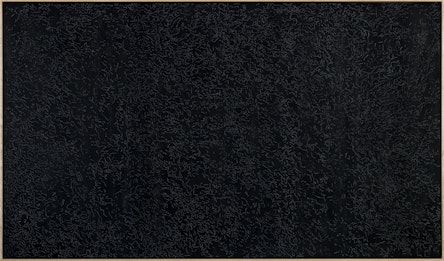
At the core of Bernardo Ortiz´s artistic practice blending drawing, writing and design, lies the comprehensive notion of “page”. According to Ortiz, “a page is a material support but also a discursive space, and the boundaries between the two are tenuous. Its surface can be opaque or transparent, it has two sides and can be real or fictional.” As a general rule, Ortiz intervenes the support in subtle ways: with sharp light lines made by hard-leaded pencils; with thin coats of gouache, oil paint, and enamel; or using words and phrases often extracted from specific poems, lyrics, or literary works. All in all, his works are literary drawings insinuate the passage of time while posing questions about this complex territory known as the ‘surface’ or the ‘page’.
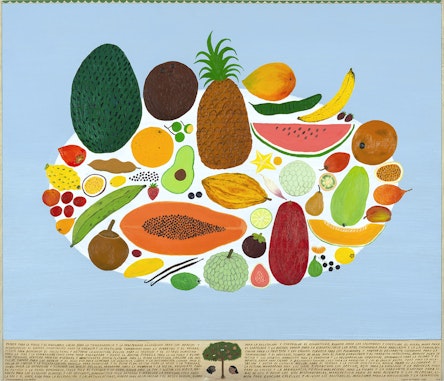
Alfonso (Popayán, 1986) is a visual artist interested in the anecdotal, in orality and in the multiple narratives that can be woven from abstraction and speculation. In his practice, drawing is considered a kind of intervention that articulates with other media, its power of representation is not limited to the creation of an image but rather opens possibilities for dialogue and incorporation with other frameworks of interpretation, where sculpture, audiovisual, anthropological, text, food, editorial resources and collaboration with other people are part of his processes.
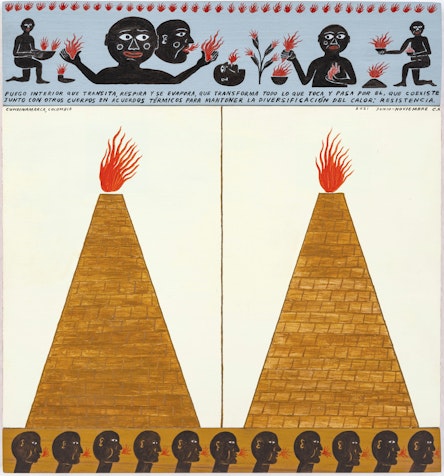
Alfonso (Popayán, 1986) is a visual artist interested in the anecdotal, in orality and in the multiple narratives that can be woven from abstraction and speculation. In his practice, drawing is considered a kind of intervention that articulates with other media, its power of representation is not limited to the creation of an image but rather opens possibilities for dialogue and incorporation with other frameworks of interpretation, where sculpture, audiovisual, anthropological, text, food, editorial resources and collaboration with other people are part of his processes.
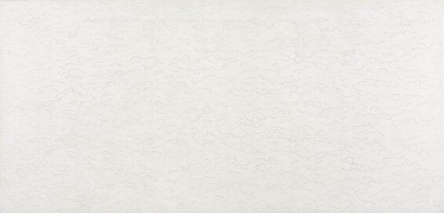
Luis Roldán’s interests relate to the exploration of abstract painting, its materials, structures and final appearance. Using a wide range of media and supports, he presents an experimental and object-oriented review of the pictorial gesture. Incorporating different methodologies and techniques, Roldán creates links between his literary, poetic or musical references, and his research about color, surface, and the painting’s support.
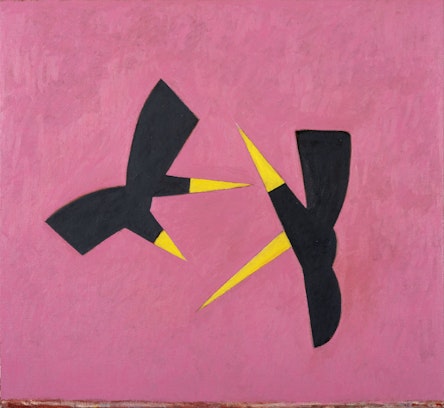
Luis Roldán’s interests relate to the exploration of abstract painting, its materials, structures and final appearance. Using a wide range of media and supports, he presents an experimental and object-oriented review of the pictorial gesture. Incorporating different methodologies and techniques, Roldán creates links between his literary, poetic or musical references, and his research about color, surface, and the painting’s support.
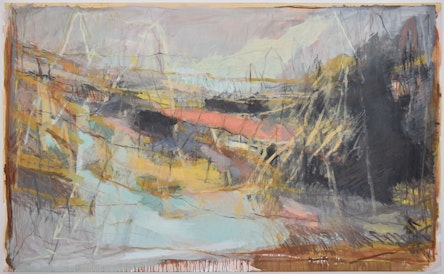
Luis Roldán’s interests relate to the exploration of abstract painting, its materials, structures and final appearance. Using a wide range of media and supports, he presents an experimental and object-oriented review of the pictorial gesture. Incorporating different methodologies and techniques, Roldán creates links between his literary, poetic or musical references, and his research about color, surface, and the painting’s support.
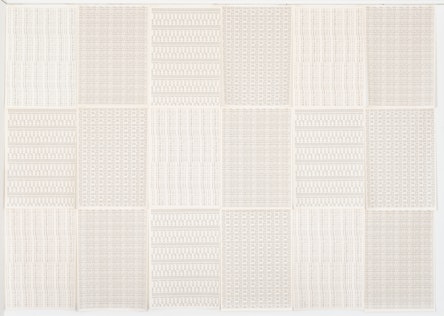
At the core of Bernardo Ortiz´s artistic practice blending drawing, writing and design, lies the comprehensive notion of “page”. According to Ortiz, “a page is a material support but also a discursive space, and the boundaries between the two are tenuous. Its surface can be opaque or transparent, it has two sides and can be real or fictional.” As a general rule, Ortiz intervenes the support in subtle ways: with sharp light lines made by hard-leaded pencils; with thin coats of gouache, oil paint, and enamel; or using words and phrases often extracted from specific poems, lyrics, or literary works. All in all, his works are literary drawings insinuate the passage of time while posing questions about this complex territory known as the ‘surface’ or the ‘page’.
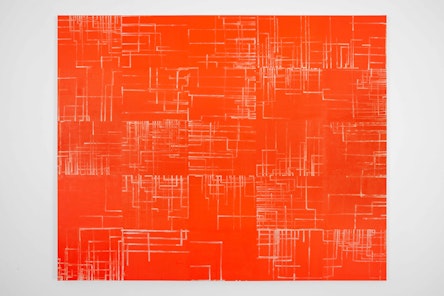
At the core of Bernardo Ortiz´s artistic practice blending drawing, writing and design, lies the comprehensive notion of “page”. According to Ortiz, “a page is a material support but also a discursive space, and the boundaries between the two are tenuous. Its surface can be opaque or transparent, it has two sides and can be real or fictional.” As a general rule, Ortiz intervenes the support in subtle ways: with sharp light lines made by hard-leaded pencils; with thin coats of gouache, oil paint, and enamel; or using words and phrases often extracted from specific poems, lyrics, or literary works. All in all, his works are literary drawings insinuate the passage of time while posing questions about this complex territory known as the ‘surface’ or the ‘page’.
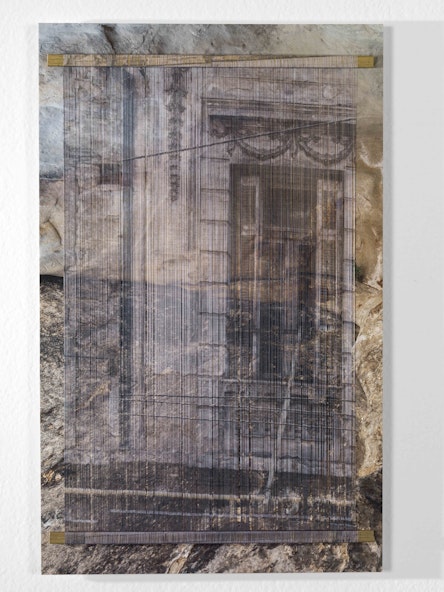
Leyla Cardenas’ work engages with notions of absence, memory, history, destruction, accumulation and mutability through extractive processes that culminate in large-scale, delicate installations that render perceptible the elusive idea of time. Addressing the weight, length, and accumulation of time, Cardenas’ method involves the removal of strata from surfaces of old, unattended buildings, and the subsequent reconstruction of fragments that give evidence of an obliterated past. In an act of resistance against oblivion, Cardenas embraces destruction by literally bringing to her work layers of time and history that inevitably reshape the present.
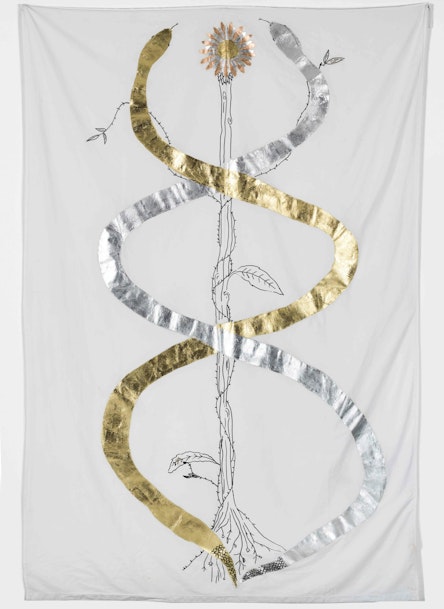
Throughout her multidecade career, Lizarazo's poetic and political oeuvre has developed a distinctive visual language that confronts the systemic subjugation of the female voice and body, creating a space that recognizes and celebrates female autonomy, sexuality, and liberation. Lizarazo's artistic practice employs an intermedial approach that inhabits her drawings, watercolors, paintings, sculptures, embroideries, and environmental installations. Furthermore, her work engages with a heterogeneous, often unconventional, range of materials: glass, ceramics, wood, bones, wool, human hair, and dramatically varying scales—from monumental to fragmental. Representational of Lizarazo's practice is the depiction of the fragmented body, both inside and outside, portraying it in vulnerable yet poignant manners, including a series of ethereal yet disquieting pieces investigating the body's skin, organs, and orifices. The series Skin (2017-2021), an iconic set of works with stockings as a metonymy of human skin, delicate and elastic, was conceived from her deep interest in the largest organ in the human body. Each individual's skin rises as singular cartography; a thread that stretches, shrinks, changes color, texture, adheres, repairs itself, sickens, scars, and cures. It is a system that communicates the intimate visceral with the foreign environment, revealing the tension between the physical body and its surrounding space, between what is inside and what is outside. In this series, Lizarazo synthesizes startling and often ambiguous imagery with decorative and craftlike elements, blending the ethereal and the aggressive, which is another theme in her work.

Throughout her multidecade career, Lizarazo's poetic and political oeuvre has developed a distinctive visual language that confronts the systemic subjugation of the female voice and body, creating a space that recognizes and celebrates female autonomy, sexuality, and liberation. Lizarazo's artistic practice employs an intermedial approach that inhabits her drawings, watercolors, paintings, sculptures, embroideries, and environmental installations. Furthermore, her work engages with a heterogeneous, often unconventional, range of materials: glass, ceramics, wood, bones, wool, human hair, and dramatically varying scales—from monumental to fragmental. Representational of Lizarazo's practice is the depiction of the fragmented body, both inside and outside, portraying it in vulnerable yet poignant manners, including a series of ethereal yet disquieting pieces investigating the body's skin, organs, and orifices. The series Skin (2017-2021), an iconic set of works with stockings as a metonymy of human skin, delicate and elastic, was conceived from her deep interest in the largest organ in the human body. Each individual's skin rises as singular cartography; a thread that stretches, shrinks, changes color, texture, adheres, repairs itself, sickens, scars, and cures. It is a system that communicates the intimate visceral with the foreign environment, revealing the tension between the physical body and its surrounding space, between what is inside and what is outside. In this series, Lizarazo synthesizes startling and often ambiguous imagery with decorative and craftlike elements, blending the ethereal and the aggressive, which is another theme in her work.
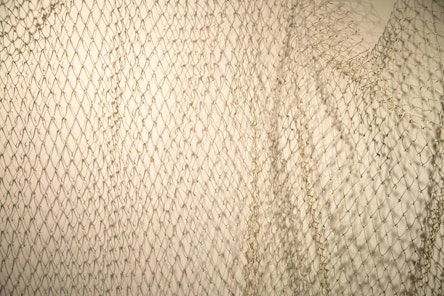
Throughout her multidecade career, Lizarazo's poetic and political oeuvre has developed a distinctive visual language that confronts the systemic subjugation of the female voice and body, creating a space that recognizes and celebrates female autonomy, sexuality, and liberation. Lizarazo's artistic practice employs an intermedial approach that inhabits her drawings, watercolors, paintings, sculptures, embroideries, and environmental installations. Furthermore, her work engages with a heterogeneous, often unconventional, range of materials: glass, ceramics, wood, bones, wool, human hair, and dramatically varying scales—from monumental to fragmental. Representational of Lizarazo's practice is the depiction of the fragmented body, both inside and outside, portraying it in vulnerable yet poignant manners, including a series of ethereal yet disquieting pieces investigating the body's skin, organs, and orifices. The series Skin (2017-2021), an iconic set of works with stockings as a metonymy of human skin, delicate and elastic, was conceived from her deep interest in the largest organ in the human body. Each individual's skin rises as singular cartography; a thread that stretches, shrinks, changes color, texture, adheres, repairs itself, sickens, scars, and cures. It is a system that communicates the intimate visceral with the foreign environment, revealing the tension between the physical body and its surrounding space, between what is inside and what is outside. In this series, Lizarazo synthesizes startling and often ambiguous imagery with decorative and craftlike elements, blending the ethereal and the aggressive, which is another theme in her work.
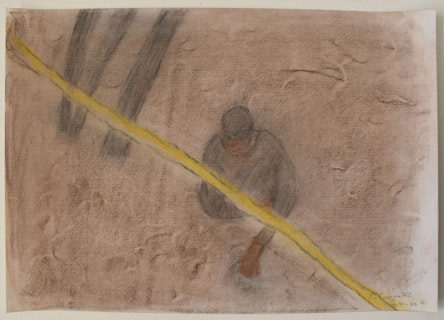
One of Colombia’s most important living artists, Beatriz González occupies a central position in the history of contemporary Colombian art. As early as 1962 she began reinterpreting Western art’s most iconic works as a means to reflect upon ways in which high culture was assimilated in an underdeveloped country like Colombia. She elaborated a unique visual language informed by her fascination with the notion of “taste” and based on the use of found images, a bold color palette and the creation of flat compositions often carried out on unconventional supports including furniture pieces, bed covers and oversized curtains. Her unique perspective on Colombia’s popular culture and politics, became to the configuration of an artistic voice that has resonated through the art world and beyond.
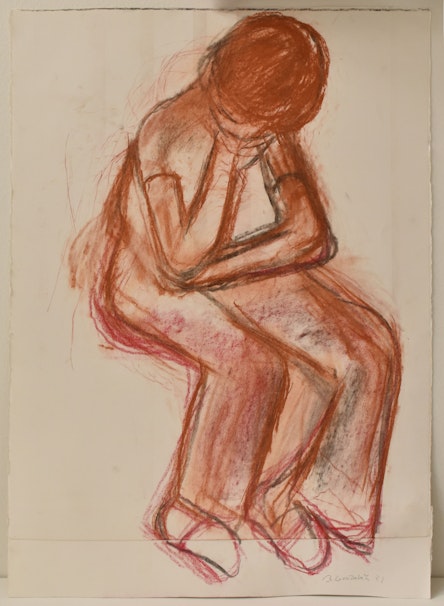
One of Colombia’s most important living artists, Beatriz González occupies a central position in the history of contemporary Colombian art. As early as 1962 she began reinterpreting Western art’s most iconic works as a means to reflect upon ways in which high culture was assimilated in an underdeveloped country like Colombia. She elaborated a unique visual language informed by her fascination with the notion of “taste” and based on the use of found images, a bold color palette and the creation of flat compositions often carried out on unconventional supports including furniture pieces, bed covers and oversized curtains. Her unique perspective on Colombia’s popular culture and politics, became to the configuration of an artistic voice that has resonated through the art world and beyond.
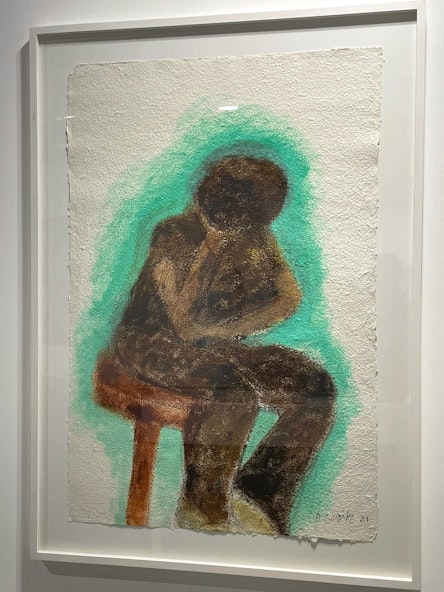
One of Colombia’s most important living artists, Beatriz González occupies a central position in the history of contemporary Colombian art. As early as 1962 she began reinterpreting Western art’s most iconic works as a means to reflect upon ways in which high culture was assimilated in an underdeveloped country like Colombia. She elaborated a unique visual language informed by her fascination with the notion of “taste” and based on the use of found images, a bold color palette and the creation of flat compositions often carried out on unconventional supports including furniture pieces, bed covers and oversized curtains. Her unique perspective on Colombia’s popular culture and politics, became to the configuration of an artistic voice that has resonated through the art world and beyond.
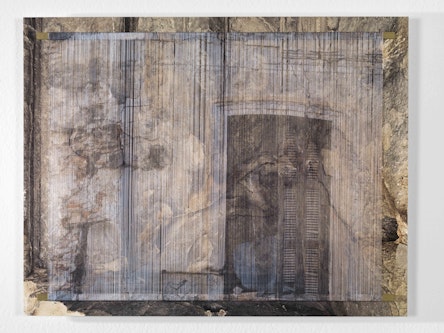
Leyla Cardenas’ work engages with notions of absence, memory, history, destruction, accumulation and mutability through extractive processes that culminate in large-scale, delicate installations that render perceptible the elusive idea of time. Addressing the weight, length, and accumulation of time, Cardenas’ method involves the removal of strata from surfaces of old, unattended buildings, and the subsequent reconstruction of fragments that give evidence of an obliterated past. In an act of resistance against oblivion, Cardenas embraces destruction by literally bringing to her work layers of time and history that inevitably reshape the present.
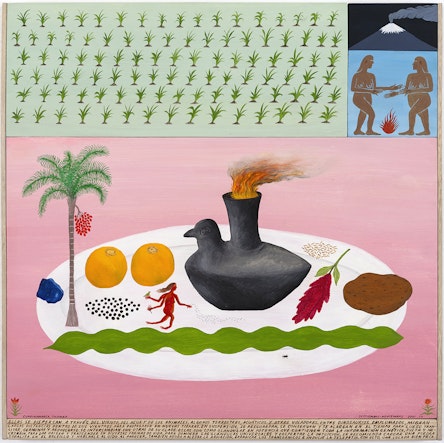
Alfonso (Popayán, 1986) is a visual artist interested in the anecdotal, in orality and in the multiple narratives that can be woven from abstraction and speculation. In his practice, drawing is considered a kind of intervention that articulates with other media, its power of representation is not limited to the creation of an image but rather opens possibilities for dialogue and incorporation with other frameworks of interpretation, where sculpture, audiovisual, anthropological, text, food, editorial resources and collaboration with other people are part of his processes.